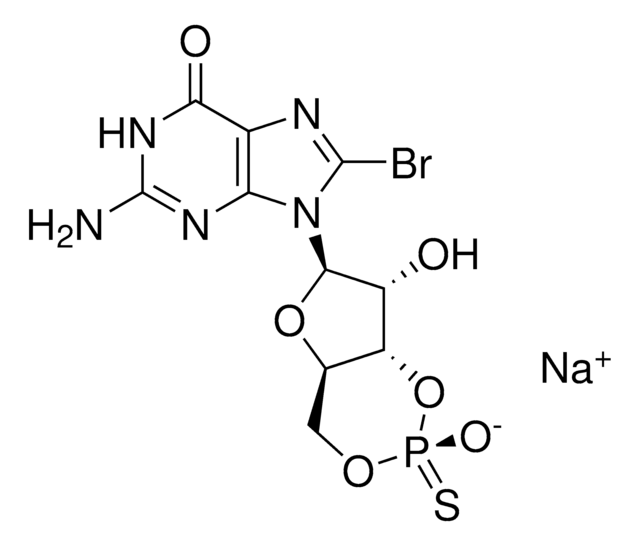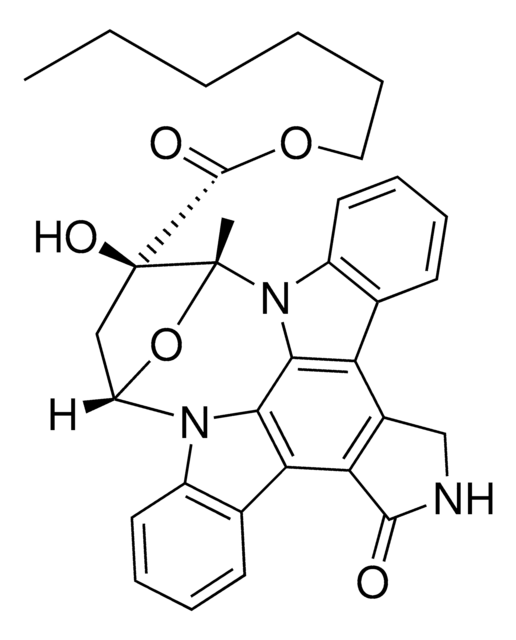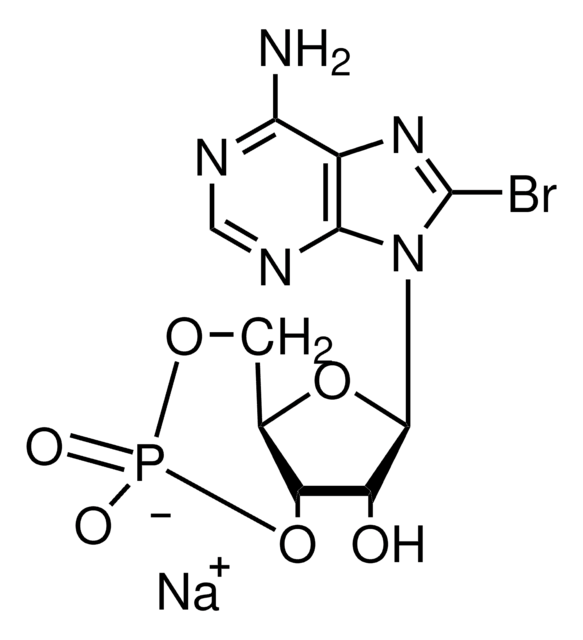P7739
Protein kinase A inhibitor fragment 5-24 amide trifluoroacetate salt
≥95% (HPLC), lyophilized powder
About This Item
Productos recomendados
assay
≥95% (HPLC)
form
lyophilized powder
mol wt
calculated mol wt 2219
composition
Peptide content, ~75%
solubility
H2O: soluble
UniProt accession no.
shipped in
wet ice
storage temp.
−20°C
SMILES string
OC(=O)C(F)(F)F.CC[C@H](C)[C@H](NC(=O)[C@H](C)NC(=O)[C@H](CC(N)=O)NC(=O)[C@H](CCCNC(N)=N)NC(=O)[C@H](CCCNC(N)=N)NC(=O)CNC(=O)[C@@H](NC(=O)[C@H](CCCNC(N)=N)NC(=O)CNC(=O)[C@H](CO)NC(=O)[C@H](C)NC(=O)[C@@H](NC(=O)[C@H](Cc1ccccc1)NC(=O)[C@H](CC(O)=O)NC(=O)[C@H](C)NC(=O)[C@H](Cc2ccc(O)cc2)NC(=O)[C@@H](NC(=O)[C@@H](N)[C@@H](C)O)[C@@H](C)O)[C@@H](C)CC)[C@@H](C)O)C(=O)N[C@@H](Cc3c[nH]cn3)C(=O)N[C@@H](CC(O)=O)C(N)=O
InChI
1S/C94H149N33O30.C2HF3O2/c1-11-42(3)70(125-86(152)59(31-50-19-14-13-15-20-50)119-85(151)62(36-68(138)139)118-75(141)44(5)111-82(148)58(32-51-24-26-53(132)27-25-51)121-91(157)73(49(10)131)127-87(153)69(96)47(8)129)89(155)113-45(6)76(142)123-63(40-128)78(144)108-38-65(134)115-55(22-17-29-106-93(100)101)81(147)126-72(48(9)130)88(154)109-39-66(135)114-54(21-16-28-105-92(98)99)79(145)116-56(23-18-30-107-94(102)103)80(146)120-61(34-64(95)133)83(149)112-46(7)77(143)124-71(43(4)12-2)90(156)122-60(33-52-37-104-41-110-52)84(150)117-57(74(97)140)35-67(136)137;3-2(4,5)1(6)7/h13-15,19-20,24-27,37,41-49,54-63,69-73,128-132H,11-12,16-18,21-23,28-36,38-40,96H2,1-10H3,(H2,95,133)(H2,97,140)(H,104,110)(H,108,144)(H,109,154)(H,111,148)(H,112,149)(H,113,155)(H,114,135)(H,115,134)(H,116,145)(H,117,150)(H,118,141)(H,119,151)(H,120,146)(H,121,157)(H,122,156)(H,123,142)(H,124,143)(H,125,152)(H,126,147)(H,127,153)(H,136,137)(H,138,139)(H4,98,99,105)(H4,100,101,106)(H4,102,103,107);(H,6,7)/t42-,43-,44-,45-,46-,47+,48+,49+,54-,55-,56-,57-,58-,59-,60-,61-,62-,63-,69-,70-,71-,72-,73-;/m0./s1
InChI key
CJBPFVMGYBOAOJ-AYVQDJQPSA-N
Gene Information
human ... PKIA(5569)
Amino Acid Sequence
General description
Biochem/physiol Actions
Storage Class
11 - Combustible Solids
wgk_germany
WGK 3
flash_point_f
Not applicable
flash_point_c
Not applicable
ppe
Eyeshields, Gloves, type N95 (US)
Elija entre una de las versiones más recientes:
¿Ya tiene este producto?
Encuentre la documentación para los productos que ha comprado recientemente en la Biblioteca de documentos.
Nuestro equipo de científicos tiene experiencia en todas las áreas de investigación: Ciencias de la vida, Ciencia de los materiales, Síntesis química, Cromatografía, Analítica y muchas otras.
Póngase en contacto con el Servicio técnico








